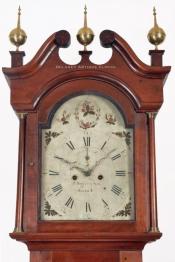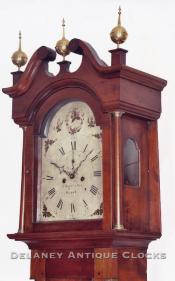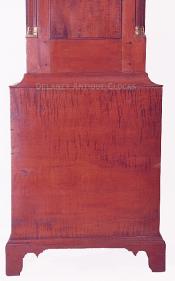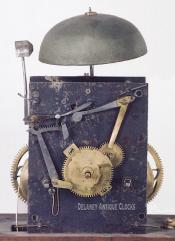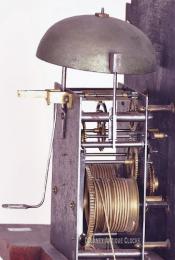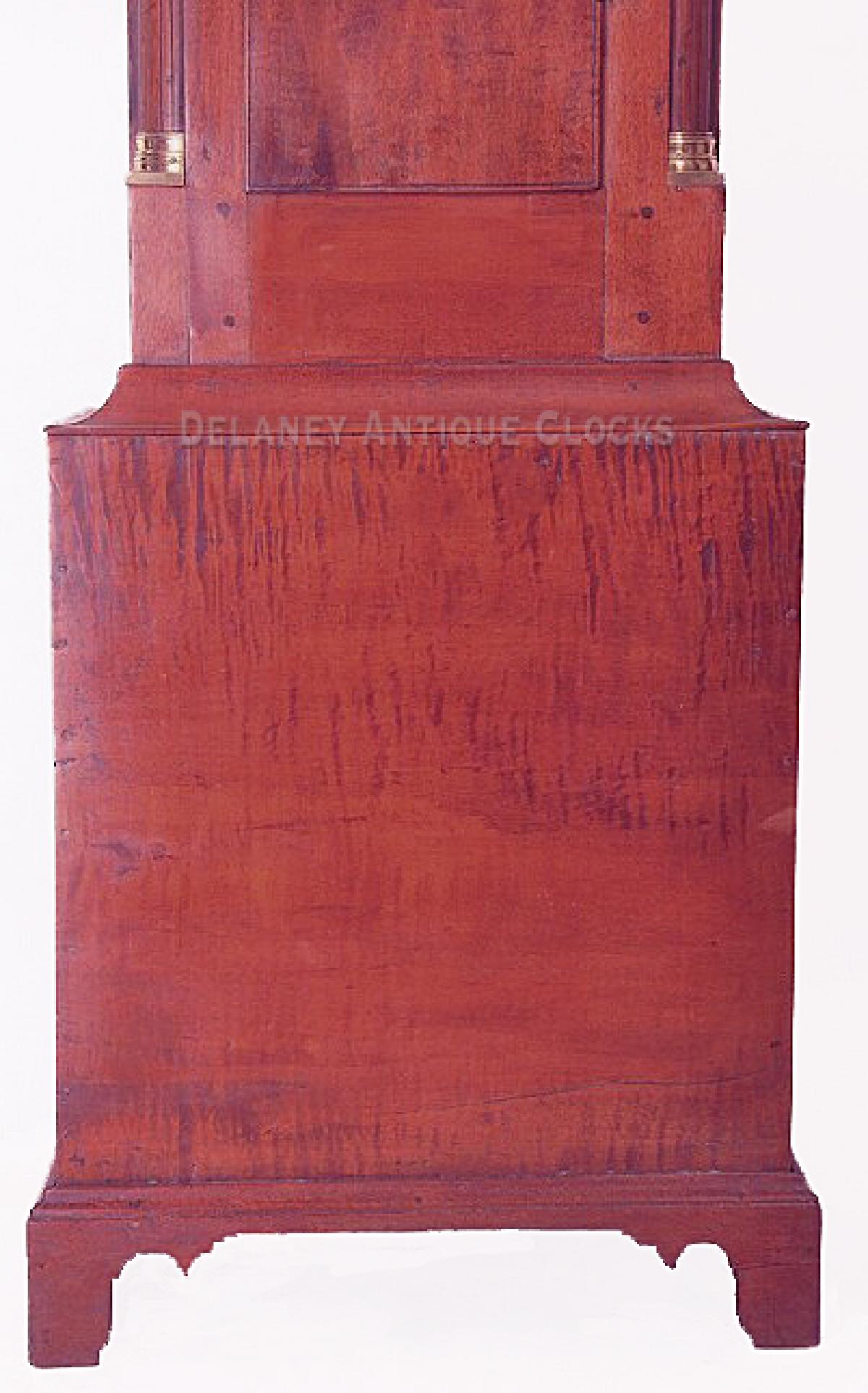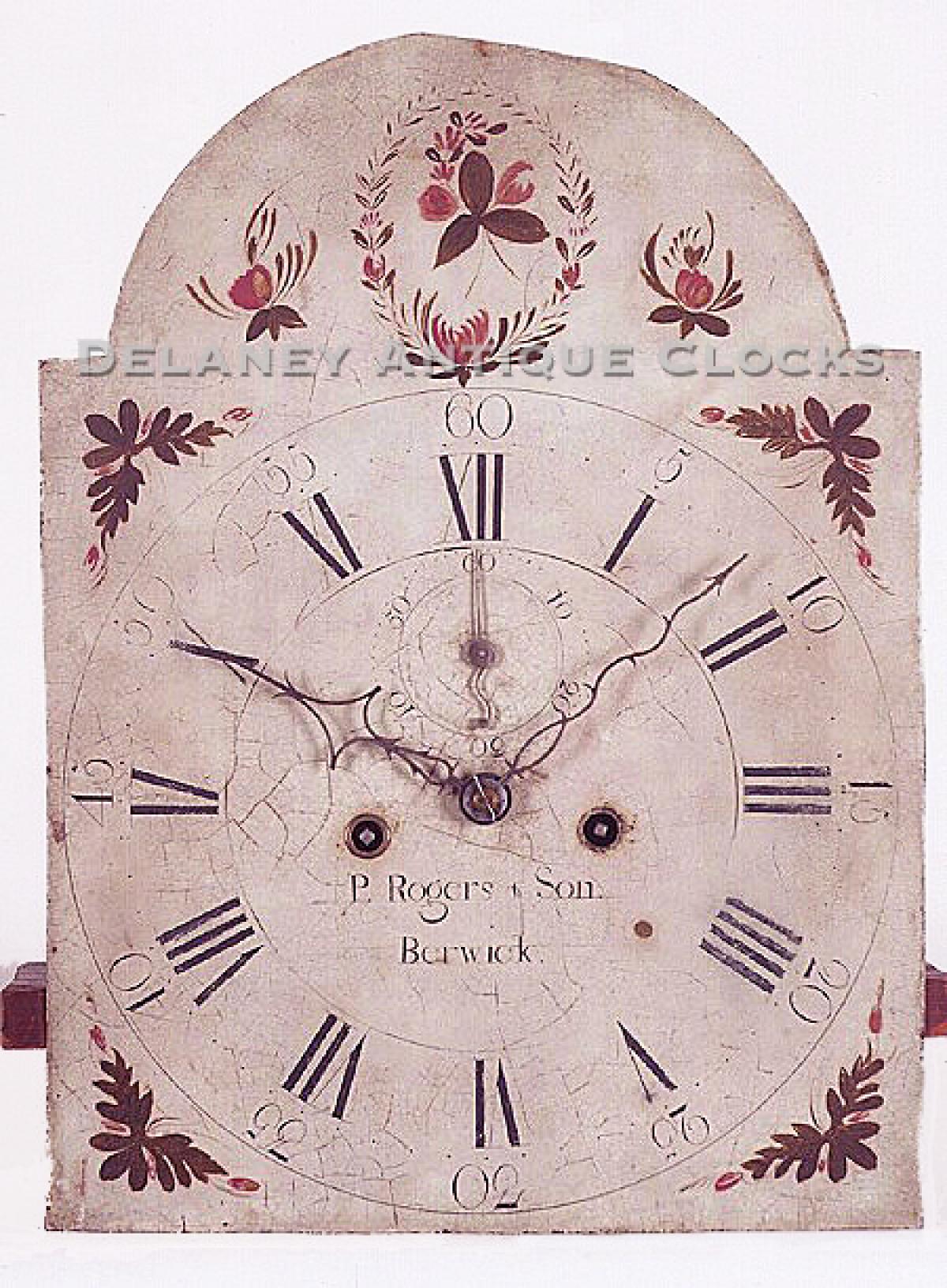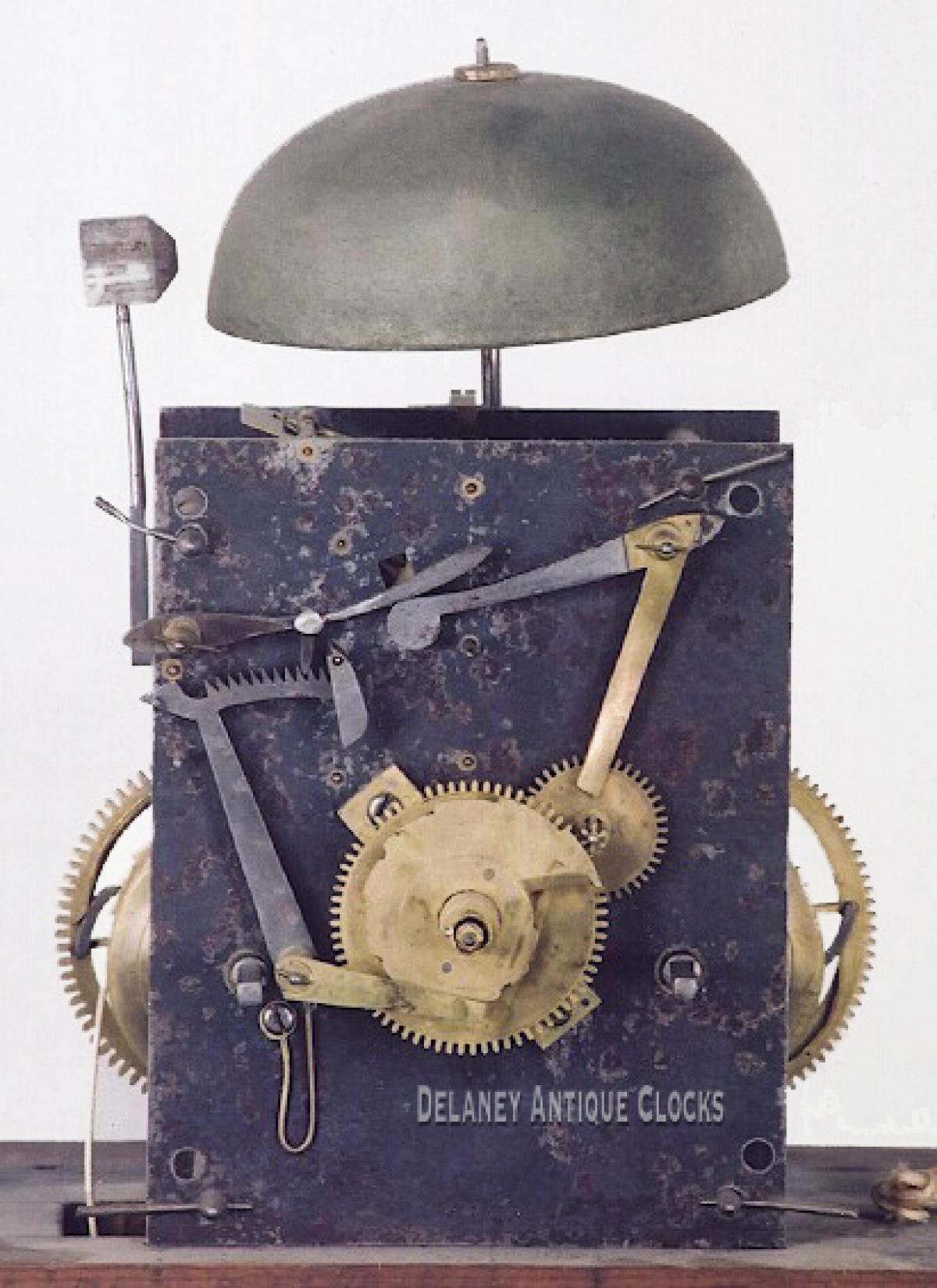Paul Rogers & Son (Abner) of Berwick, Maine. Tall case clock or grandfather clock. QQ-13.
This is a fine maple and tiger maple-cased tall clock made by Paul Rogers & Son of Berwick, Maine. This clock was included in the exhibit to complement the 16th Annual NAWCC (National Association of Watch and Clock Collectors) Seminar. The title of the exhibit was "American Masterpieces, Tall Case Clocks of the Eighteenth Century." This very clock is pictured in the exhibit brochure.
This attractive country clock is unusually tall. The case stands a full 8 feet 1 inch tall to the top of the arches or 8 feet 3 inches tall to the tip top of the brass center finial. This case is constructed in various grades of maple, and white pine is used as the secondary wood.
This fine example stands on applied bracket feet. The cutout pattern forms nicely shaped returns and a simple base molding. The base panel exhibits tiger maple graining vertical that is layout out in a vertical arrangement. The waist section is very long and narrow. The smoothly turned quarter columns are fluted and mounted in brass quarter capitals. These help accentuate the case's long narrow proportions. In addition, the columns help center the long rectangular-shaped waist door. This door is constructed with an incised line detail that follows the shape of the door. Another nice country detail is the multiple pegs found in the waist section that are used in the construction of the waist framing. The bonnet is formatted with a swan's neck pediment. The rosettes are line inlaid. Three brass ball-and-spiked finials surmount this clock case. Fully turned bonnet columns terminating in brass capitals flank the bonnet door. This door is an arched form and is fitted with glass. It opens to access a locally painted dial.
This dial is iron and is paint decorated. It is signed by the Clockmaker's partnership below the center arbor in a large block lettering. Each of the four spandrels is decorated with an interesting floral pattern. This theme is repeated in the arch of the dial as well. The style of this painted dial decoration is somewhat unique to the Berwick region and is often found on other Rogers families and their apprentice's clocks. This dial displays the time in a traditional format with large Roman numerals marking each of the twelve hours. Arabic numerals are positioned at the five-minute marker locations. A subsidiary seconds dial is located below the Roman hour numeral XII.
The weight-driven movement is of good quality. It is designed to run for an eight-day duration on a full wind. This clock will also strike each hour on a cast iron bell. This movement is typical of the Rogers school of clockmaking in terms of its construction. The movement plates are not brass. They are constructed in iron and feature brass bushings. It is thought that this was done to conserve the use of brass which was an expensive material to work with. This clock was made circa 1805.
Paul Rogers was born in 1752 and died in 1818. He was a Quaker and an active member of the Society of Friends. The Quakers were a sect known for their independence and devotion to hard work. They had established numerous small colonies throughout the more rural parts of New England. He was a very productive clockmaker who worked at his trade for nearly forty years. A few notable apprentices to Paul include his son Abner (1777-1809), Reuben Bracket (1761-1867), and John Taber (1796-1859). We have owned a large number of Paul Rogers clocks.
Abner Rogers was born in 1777 and died in 1809. It is logical to assume that his father, Paul trained him in clockmaking. We have owned several Abner Rogers-signed tall clocks. These clocks also had iron plates incorporated into the construction of the movement.
Inventory number QQ-13.
Paul Rogers was born 1752 and died in 1818. He was a Quaker and an active member of the Society of Friends. The Quakers were a sect known for their independence and devotion to hard work. They had established numerous small colonies throughout the more rural parts of New England. He was a very productive clockmaker who worked at his trade for nearly forty years. A few notable apprentices to Paul include his son Abner (1777-1809), Reuben Bracket (1761-1867), and John Taber (1796-1859). We have owned a large number of Paul Rogers clocks.
Abner Rogers was born in 1777 and died in 1809. It is logical to assume that his father Paul trained him in clockmaking. We have owned several Abner Rogers signed tall clocks. These clocks also had iron plates incorporated into the construction of the movement.


